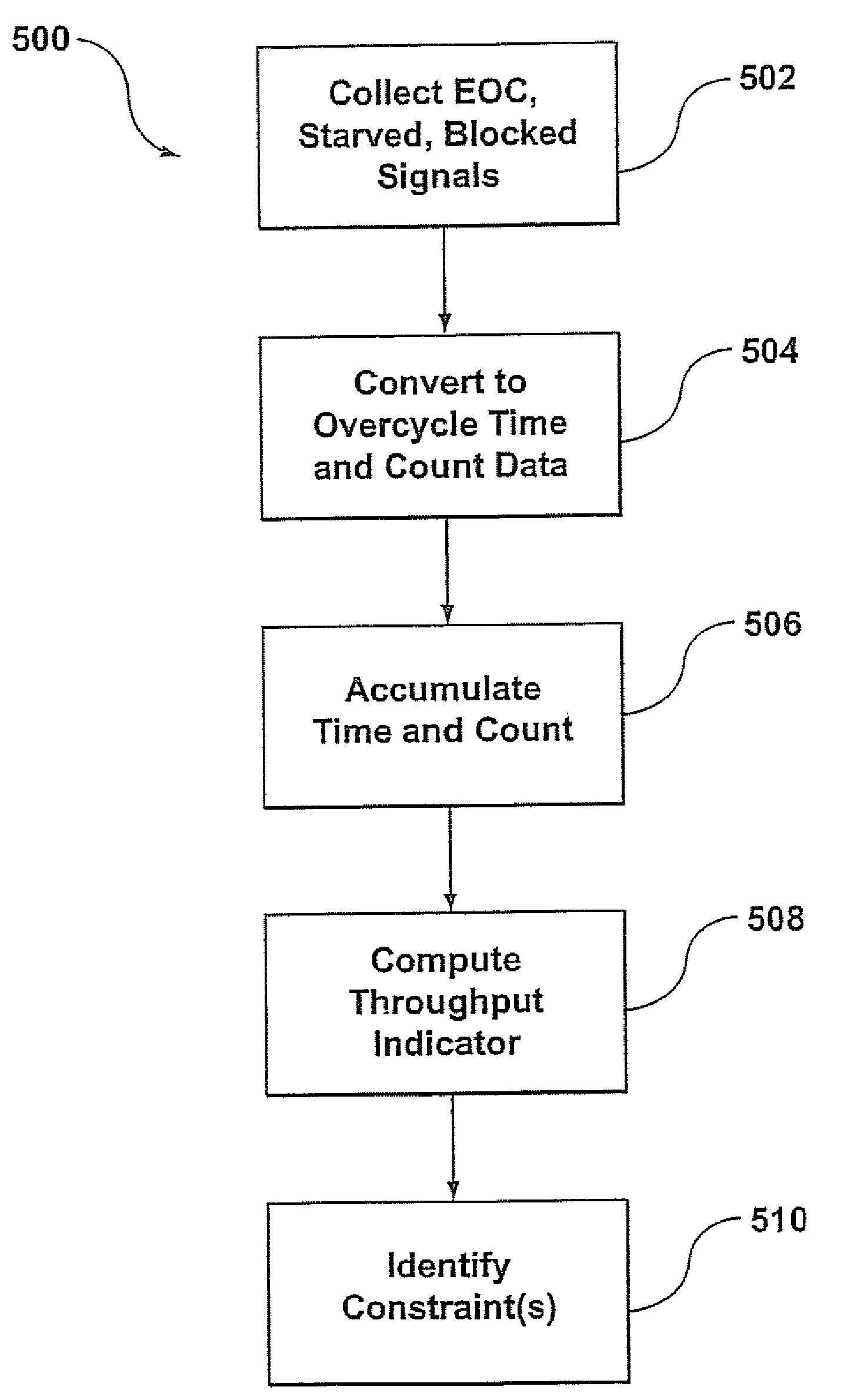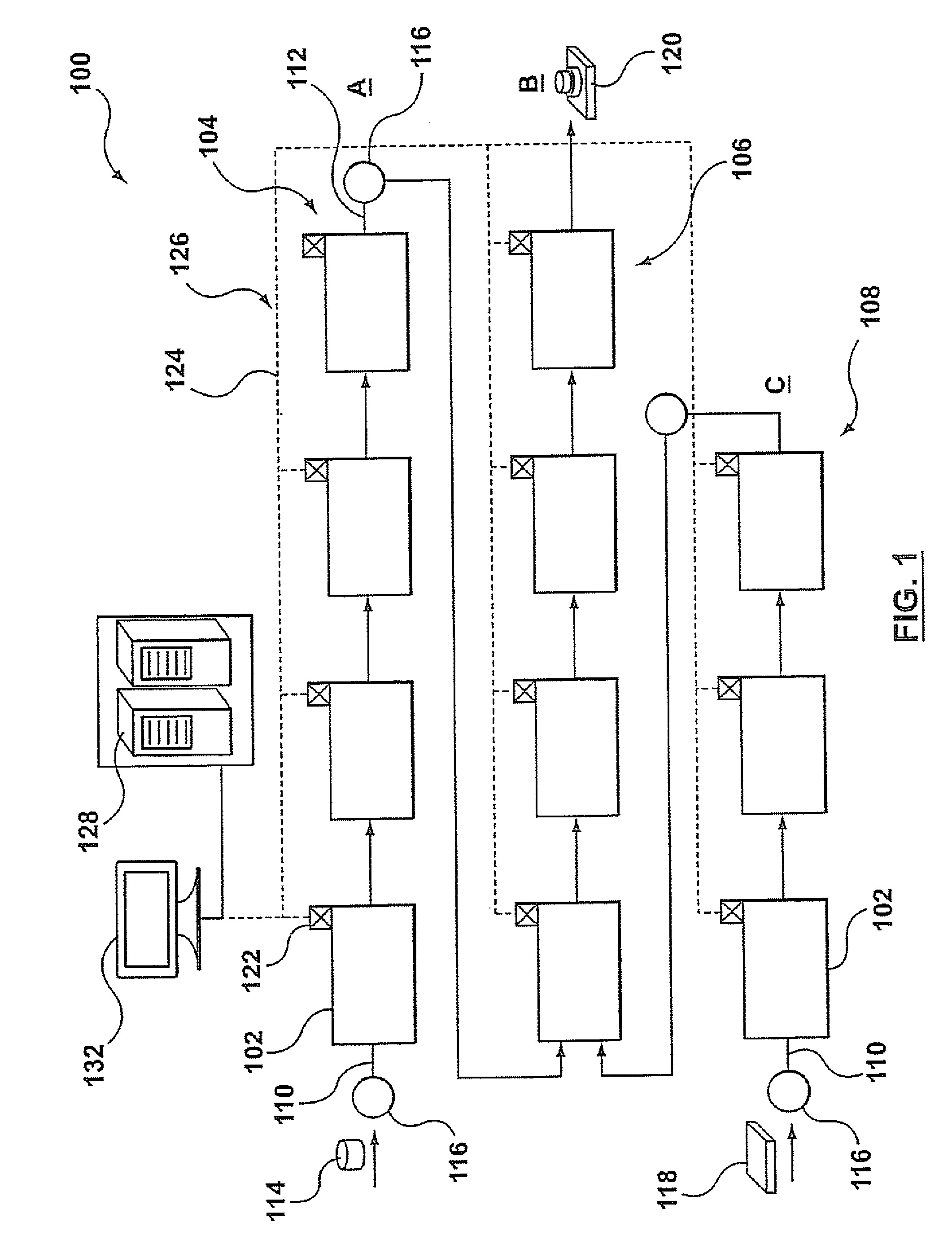System and method of monitoring and quantifying performance of an automated manufacturing facility
a manufacturing facility and automated technology, applied in the field of monitoring and managing the performance of automated manufacturing facilities, can solve the problems of affecting the overall throughput of the manufacturing process, affecting the throughput of the facility, and affecting the product flow
- Summary
- Abstract
- Description
- Claims
- Application Information
AI Technical Summary
Benefits of technology
Problems solved by technology
Method used
Image
Examples
Embodiment Construction
[0031]The description which follows and the embodiments described therein are provided by way of illustration of an example, or examples, of particular embodiments of the principles of the present invention. These examples are provided for the purposes of explanation, and not limitation, of those principles and of the invention. In the description which follows, like parts are marked throughout the specification and the drawings with the same respective reference numerals.
[0032]The present invention relates to a system and method for identifying and quantifying constraints in an automated manufacturing or processing facility. The facility has a number of automated workstations. In an embodiment the system utilizes automatically collected event and state signals from each workstation and processes these signals to derive a throughput capability measure for each workstation. The automated collection of signals is further augmented by provision of input devices that allow users to manu...
PUM
 Login to View More
Login to View More Abstract
Description
Claims
Application Information
 Login to View More
Login to View More - R&D
- Intellectual Property
- Life Sciences
- Materials
- Tech Scout
- Unparalleled Data Quality
- Higher Quality Content
- 60% Fewer Hallucinations
Browse by: Latest US Patents, China's latest patents, Technical Efficacy Thesaurus, Application Domain, Technology Topic, Popular Technical Reports.
© 2025 PatSnap. All rights reserved.Legal|Privacy policy|Modern Slavery Act Transparency Statement|Sitemap|About US| Contact US: help@patsnap.com



